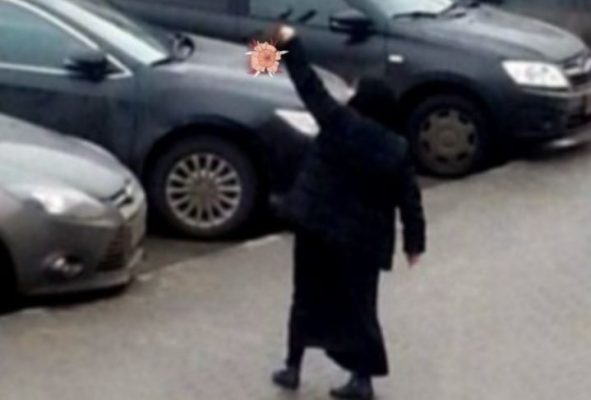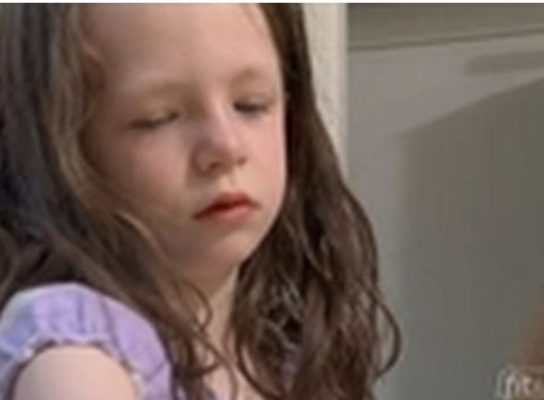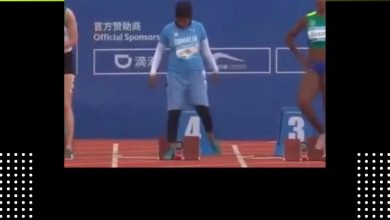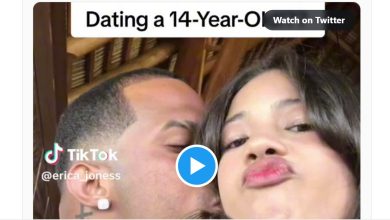In the vast realm of the internet, where an abundance of content flows endlessly, certain videos emerge as extraordinary phenomena that captivate the collective curiosity of users worldwide. The Schizophrenia Lady Baby Video, featured prominently on the website nowviralvideo.com, is one such enigma—a surreal and bewildering clip that has taken the online community by storm. In this article, we delve into the mysterious world of this viral sensation, exploring its origins, its widespread dissemination across various social media platforms, and the crucial importance of approaching such content with a discerning and compassionate perspective. Join us as we unravel the enigmatic tale behind the Schizophrenia Lady Baby Video and its impact on our digital age.

Contents
- I. Introduction Schizophrenia Lady Baby Video
- II. Description of the Schizophrenia Lady Baby Video
- III. The Case of Gulchekhra Bobokulova, the “Schizophrenia Lady”
- IV. The Day of the “Niñera con la Cabeza en la Mano” Crime
- V. Police Investigation of the Video Case
- VI. Consequences of the Impactful Video
- VII. Conclusion “Schizophrenia Lady Baby Video”
I. Introduction Schizophrenia Lady Baby Video
In the realm of internet phenomena, the “Schizophrenia Lady Baby Video” has emerged as a profoundly intriguing and enigmatic spectacle that has captured the collective curiosity of online users worldwide. This surreal and bewildering video showcases a woman calmly holding a severed human head, defying explanation and leaving viewers utterly astonished.
The “Schizophrenia Lady Baby Video” has taken the internet by storm, swiftly disseminating across multiple social media platforms such as TikTok, Twitter, Reddit, Instagram, Telegram, YouTube, and Facebook. Its inexplicable content has triggered a wave of intrigue and discussion.
This peculiar and unsettling footage serves as a stark reminder of the boundless and often perplexing nature of the online world. However, it is crucial to approach such content with caution, empathy, and responsible engagement. Jumping to conclusions about someone’s mental health solely based on an online video can be misleading and harmful. Without proper context and a comprehensive understanding of the individual’s circumstances, making accurate conclusions about their mental state is impossible.
As consumers of digital content, it is our responsibility to exercise critical thinking, skepticism, and empathy when encountering sensational and unusual videos like the “Schizophrenia Lady Baby Video.” While it may ignite curiosity, it is vital to remember that the internet is rife with misleading and manipulated content. Our approach to these mysteries of the online world should always be rooted in understanding and respect for the complexities of the human experience.

II. Description of the Schizophrenia Lady Baby Video
The “Schizophrenia Lady Baby Video” is a chilling and bewildering clip that depicts a woman holding a severed human head in her hands. This eerie image is inexplicable and leaves viewers utterly astonished, prompting numerous questions about its origin and the mental state of the individual involved. The video’s unsettling nature has contributed significantly to its widespread intrigue and fascination across the internet.
In the digital landscape, the “Schizophrenia Lady Baby Video” has demonstrated an astonishing ability to rapidly proliferate across various social media platforms. This perplexing video, which defies conventional explanation, became a viral sensation, capturing the attention of online communities worldwide.
III. The Case of Gulchekhra Bobokulova, the “Schizophrenia Lady”
Gulchekhra Bobokulova, known as the “Schizophrenia Lady” from the infamous “Schizophrenia Lady Baby Video,” hailed from Samarcanda, Uzbekistan. Born in 1977, she came from a traditional Muslim family and entered into marriage early, having three children. Gulchekhra’s husband remained in Uzbekistan while she ventured to Moscow in pursuit of employment to support her family. The emotional strain of leaving her children behind and the extended physical separation from her husband weighed heavily on her.
In Moscow, Gulchekhra found work as a nanny for a middle-class family, responsible for caring for a 4-year-old girl named Anastasia, who had developmental issues. Her employers, the Meshcheryakovas, entrusted her with their daughter’s well-being, even providing her with accommodation in their home.
However, in the months leading up to the horrifying incident, Gulchekhra displayed concerning signs of deteriorating mental health. After a visit to Uzbekistan, her behavior took a drastic turn. She became more introverted, fervently engaged in unusual religious practices, and frequented obscure online content that raised alarm among the Meshcheryakovas.
What became apparent in retrospect was that Gulchekhra had a history of mental health issues dating back to 2003 when she was diagnosed with acute schizophrenia in Samarcanda. Unfortunately, this pre-existing mental condition went undetected and untreated, ultimately contributing to the tragic events that unfolded. The early signs of her mental instability were, tragically, missed until it was too late.

IV. The Day of the “Niñera con la Cabeza en la Mano” Crime
On a chilling day, February 29, 2016, the city of Moscow was thrust into a state of shock and disbelief by a horrifying incident captured in the now-infamous “Niñera con la Cabeza en la Mano” video. The video featured Gulchekhra Bobokulova, a 38-year-old woman from Uzbekistan, calmly walking down the streets of Moscow while holding the severed head of a 4-year-old girl in her hands. Her expression was unnervingly serene as she shouted disjointed phrases about terrorism, hatred for democracy, and her wishes for the death of others.
After approximately 10 minutes of this macabre display, Gulchekhra was apprehended by the police. Initially, there were fears of a potential terrorist attack, but it soon became evident that she was suffering from a severe mental disorder.
It was later revealed that Gulchekhra had worked as a nanny for the family of the young girl she had murdered. She had cared for Anastasia, the 4-year-old with developmental issues, for about a year and a half before the tragic incident.
However, in the months leading up to the crime, Gulchekhra displayed concerning signs of deteriorating mental health. Her behavior shifted significantly after a visit to Uzbekistan, where she had expressed religious fervor and engaged in unusual online activities that alarmed her employers.
Gulchekhra had a history of mental health issues dating back to 2003 when she was diagnosed with acute schizophrenia in Samarcanda. Unfortunately, her condition went untreated and undetected until it culminated in the horrific event captured in the video.
The video sent shockwaves across the globe, initially fueling fears of terrorism, only to reveal the tragic consequences of untreated mental illness. The incident not only devastated the Meshcheryakov family but also prompted a conversation about the inadequacies in addressing mental health issues and the need for greater vigilance in the hiring and supervision of childcare providers.
This haunting video continues to serve as a stark reminder of the devastating impact untreated mental illness can have and underscores the importance of providing adequate mental health support and understanding within society.
V. Police Investigation of the Video Case
In the aftermath of the horrifying events captured in the “Schizophrenia Lady Baby Video,” a comprehensive police investigation ensued to unravel the motives and circumstances behind the gruesome incident.
Firstly, Gulchekhra Bobokulova was subjected to rigorous interrogation immediately following her arrest. Her chilling account of the crime was devoid of emotion, as she calmly detailed the murder of 4-year-old Anastasia. She explained how she had strangled the innocent child while she slept, then decapitated her with a kitchen knife before setting their apartment ablaze. The detachment with which she described her actions revealed the extent of her psychotic delusions, adding a layer of complexity to the investigation.
Due to Gulchekhra’s alarming threats of terrorism while brandishing the severed head in public, investigators diligently explored potential links to extremist groups or terrorist networks. However, her vehement denials, coupled with the absence of any incriminating evidence on her devices and background, dispelled initial concerns of a genuine terrorist threat in Moscow.
To gain a deeper understanding of the case, forensic experts conducted a thorough psychiatric evaluation of Gulchekhra Bobokulova. This evaluation included comprehensive psychological and neurological assessments aimed at arriving at a diagnosis. The unequivocal conclusion was that she suffered from schizophrenia, a severe mental disorder characterized by hallucinations, delusions, disorganized thinking, and abnormal behavior. The evaluation revealed that Gulchekhra had experienced a severe psychotic episode, completely losing touch with reality at the time of the crime. The auditory hallucinations she reported hearing were consistent with classic symptoms of schizophrenia. This critical finding illuminated the underlying cause of the tragedy—a severely compromised mental state that had tragically gone untreated and unaddressed for an extended period.
The investigation into the “Schizophrenia Lady Baby Video” case served as a stark reminder of the imperative to recognize and address mental health issues within society. It underscored the tragic consequences that can result from the failure to provide adequate care and support for individuals suffering from severe mental disorders. The case posed profound ethical and societal questions, particularly regarding how to deliver justice in cases where severe mental illness is a contributing factor to a heinous crime.
VI. Consequences of the Impactful Video
The release and rapid dissemination of the “Schizophrenia Lady Baby Video” had far-reaching consequences that rippled through society.
Firstly, the public’s initial reaction was one of shock and outrage. The video, initially misconstrued as a potential terrorist act, sparked global condemnation and disbelief. Social media platforms were flooded with discussions and expressions of horror, as people grappled with the disturbing content of the video.
Beyond the immediate emotional impact, the incident prompted profound debates on the intersection of mental health and childcare. Questions were raised about whether Gulchekhra Bobokulova should have received more comprehensive psychiatric treatment to manage her dangerous psychotic delusions. Critics also pointed out the systemic failures in adequately monitoring her mental health, especially after previous concerning incidents.
The incident underscored the pressing need for more stringent selection processes and continuous monitoring of childcare providers. Many advocated for mandatory psychiatric evaluations for individuals in positions of responsibility for children. It highlighted the dire consequences when mental health issues are left unaddressed, particularly when individuals are entrusted with the care of vulnerable minors.
As for Gulchekhra Bobokulova herself, her severe mental illness was confirmed through a psychiatric evaluation, revealing that her actions were driven by psychotic delusions rather than malicious intent. This raised a profound ethical dilemma within society and the legal system. While some argued for her continued institutionalization as punishment for her heinous act, others believed her release, once she was deemed no longer a threat to society, was a more compassionate path.
The case of Gulchekhra Bobokulova forced society to grapple with the complexities of administering justice when mental illness plays a significant role in a grave crime. This ongoing debate serves as a poignant reminder of the enduring impact of the “Schizophrenia Lady Baby Video” on society’s collective conscience.

VII. Conclusion “Schizophrenia Lady Baby Video”
In conclusion, the “Schizophrenia Lady Baby Video” stands as a haunting and thought-provoking phenomenon in the digital age. This enigmatic video, with its surreal and bewildering content, captivated the collective curiosity of internet users worldwide. It serves as a stark reminder of the boundless and often perplexing nature of the internet, where extraordinary and disturbing content can spread rapidly.
The incident involving Gulchekhra Bobokulova, the “Schizophrenia Lady,” shed light on the importance of addressing mental health issues in society. Bobokulova’s severe mental illness, exacerbated by untreated schizophrenia, led to a horrific and tragic outcome. The case emphasized the dire consequences of failing to provide adequate care and support for individuals grappling with severe mental disorders.
Furthermore, the incident sparked critical debates about mental health, childcare, and the complexities of administering justice when mental illness is a contributing factor to a grave crime. It raised questions about the need for more rigorous selection processes and ongoing monitoring of childcare providers and the importance of mandatory psychiatric evaluations for those in positions of responsibility for children.
In an era dominated by digital information, the “Schizophrenia Lady Baby Video” serves as a poignant reminder of the necessity of empathy, compassion, and responsible engagement when encountering sensational and unusual content online. It underscores the importance of understanding and respecting the complexities of the human experience, particularly in the face of mental health challenges.
Ultimately, the video’s enduring impact extends beyond its initial shock value, challenging society to grapple with profound ethical and societal questions and to strive for a more compassionate and inclusive approach to mental health.
![[FULL] Watch Gal Abdush Black Dress Video 5 [FULL] Watch Gal Abdush Black Dress Video](https://nowviralvideo.com/wp-content/uploads/2023/12/gal-abdush-black-dress-video-390x220.jpg)


